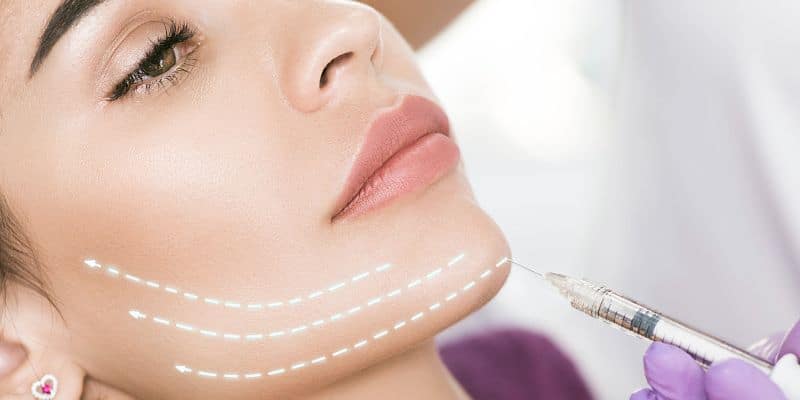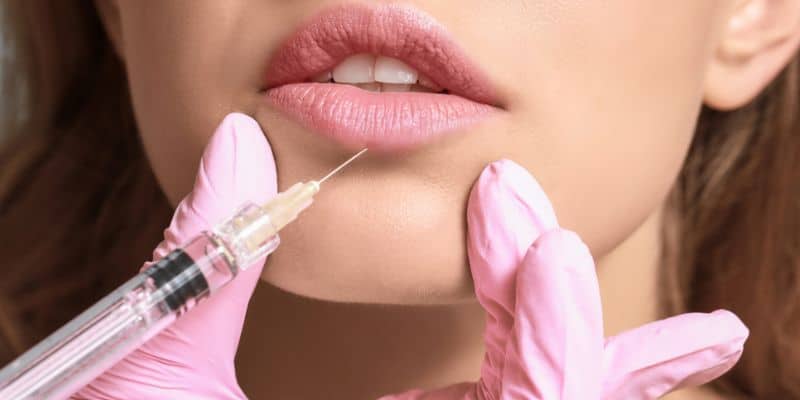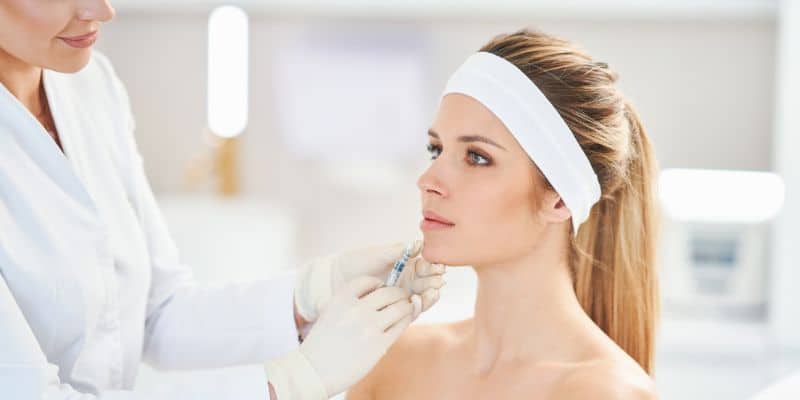
In an era where the digital world heavily influences various industries, cosmetic medicine, particularly the dermal fillers sector, is definitely feeling the effects. As medical practitioners, we have always been at the forefront of catering to the aesthetic needs of our patients. However, the rise of social media has dramatically amplified these demands, bringing a new dimension to patient expectations and the trends driving our industry.
The prominence of dermal fillers cannot be understated in this digital age. They have rapidly evolved from being a niche offering to becoming one of the most sought-after treatments in aesthetic medicine. These products, including popular brands like Juvederm, Sculptra, and Restylane, have become the cornerstone of non-surgical cosmetic procedures. Our patients are more informed than ever about these options, primarily due to the constant stream of information they receive through their social media feeds.
Doctors are witnessing an interesting paradigm shift: Social media trends are not just shaping the demand for dermal fillers, but they are also redefining our patients’ beauty standards. These platforms serve as a powerful tool for both patients and providers, opening up a marketplace of ideas and a vast network for knowledge dissemination.
However, with this transformation comes a set of challenges. Navigating the interplay between the demand for these dermal fillers, driven by social media trends, and the medical necessity of these procedures, while maintaining the highest ethical standards of care, becomes a fine balancing act.
In this article, we aim to explore how social media trends influence the demand for dermal fillers, the impact on the brands we use and trust, the role these trends play in shaping patient expectations, and the overarching effects on our industry as a whole. With a deep dive into the realities of this digital-driven world, we can equip ourselves with the knowledge to meet these evolving trends while upholding our commitment to patient safety and satisfaction.
Social Media and its Role in Cosmetic Medicine
Social media has rapidly become an integral part of modern life, infiltrating every sector, including healthcare and cosmetic medicine. For doctors who purchase dermal fillers wholesale to enhance their patients’ aesthetic appeal, understanding the role of social media in shaping trends and consumer behavior is paramount.
To begin with, social media platforms like Instagram, TikTok, Facebook, and Twitter have evolved into a digital marketplace for ideas and trends in cosmetic medicine. Influencers, celebrities, and even ordinary users share their experiences with various treatments, leading to a significant influence on public perception and demand.
In fact, a study published in the Aesthetic Surgery Journal found that 57.1% of plastic surgeons reported patients seeking cosmetic procedures to improve their selfies.
The rise of ‘before and after’ photos, ‘live procedure’ videos, and detailed patient testimonials on social media has democratized information about cosmetic treatments, making it more accessible and less stigmatized. Patients no longer rely solely on direct medical consultations to inform their decisions; they turn to social media for peer reviews, visual evidence of results, and to understand the latest trends in procedures like dermal fillers.
Further, hashtags such as #DermalFillers and #NonSurgicalFacelift allow users to connect with relevant content, facilitating rapid spread of information. These hashtags and similar ones are often associated with thousands, if not millions, of posts, attesting to the reach and impact of these trends.
This social media visibility also has implications for doctors who buy dermal fillers wholesale. By staying in tune with popular procedures and trending brands on social media, you can better anticipate their patients’ requests and ensure they are offering the most sought-after treatments. Additionally, understanding the broader conversation on social media can guide doctors in effectively communicating with their patients about the risks, benefits, and realistic expectations of various treatments.
Case in point, a trend on social media may favor one type of dermal filler or a specific technique of application. For instance, the so-called “Russian Lip Technique” for lip fillers has seen surging interest online. Understanding these trends allows doctors to stay ahead of the curve, whether it means learning a new technique, investing in a different brand of dermal filler, or simply being prepared to discuss these trends with patients.
In essence, the connections between social media and cosmetic medicine is becoming increasingly symbiotic. Social media is a driving force behind evolving beauty trends and demands, while the cosmetic medicine industry utilizes these platforms to meet and shape these demands. As this dynamic continues to evolve, doctors and medical professionals who are aware and engaged with social media trends will be better equipped to meet their patients’ needs and stay at the forefront of the industry.
Social media, despite its various criticisms, provides a pulse on the evolving landscape of cosmetic medicine, a tool that professionals purchasing dermal fillers wholesale can leverage to improve patient satisfaction and their own practice success.
Influence of Social Media Trends on Dermal Filler Demand
The rise of social media has undoubtedly reshaped various aspects of our society, and one of its significant impacts has been on the cosmetic medicine industry, specifically on the demand for dermal fillers. As the digital world continues to flourish, the influence of visual platforms like Instagram, Facebook, TikTok, and YouTube is becoming increasingly evident, driving patient demand for specific aesthetic outcomes.
Today, the aesthetics of facial features are no longer a private matter. They’ve become an integral part of our online personas, readily on display to hundreds or thousands of followers. The prevalence of photo-based social media platforms has enhanced the public’s interest in aesthetic procedures, contributing to the growing demand for dermal fillers.
Furthermore, the viral nature of social media trends can have a powerful influence on the demand for cosmetic procedures. Influencers, celebrities, and trendsetters play a crucial role in setting beauty standards and promoting specific procedures. For instance, the popularization of “Kylie Jenner lips” led to a significant increase in the demand for lip augmentation procedures using dermal fillers. In another trend, the desire for defined cheekbones and a sculpted jawline, often showcased in the trending ‘#contouring’ or ‘#jawline’ hashtags, has fueled an uptick in requests for non-surgical face sculpting using fillers.
Social media platforms also facilitate the spread of information (and misinformation) about dermal fillers. Before-and-after photos, live procedure videos, and testimonials provide potential patients with insights into what to expect from the treatment, increasing their interest and willingness to undergo such procedures. However, on the downside, the widespread availability of this information can also lead to unrealistic expectations, as the results are often influenced by individual factors such as the patient’s anatomy, lifestyle, and the expertise of the practitioner.
Additionally, the rise of telehealth consultations during the COVID-19 pandemic has further driven the trend of online cosmetic medicine. Potential patients can now get consultations, treatment plans, and follow-ups without leaving their homes, making dermal filler procedures even more accessible and appealing.
For physicians and clinics that purchase dermal fillers wholesale, staying abreast of these social media trends is crucial. By understanding the trends driving patient demand, providers can better anticipate their stock needs and adjust their marketing and patient education strategies accordingly.
Dermal Filler Brands in the Social Media Spotlight
The rise of social media hasn’t just affected consumers and their perception of beauty—it’s also brought significant changes for brands in the dermal filler industry, such as Juvederm, Sculptra, and Restylane. These brands have navigated the wave of social media trends, seizing new opportunities to engage with both practitioners and patients alike.
Juvederm, known for its range of hyaluronic acid fillers, has leveraged social media to highlight its products’ ability to deliver natural-looking, youthful results. From testimonials and before-after transformations to partnerships with influencers and physicians, Juvederm has effectively used these platforms to emphasize the science and quality behind its products. As a result, social media trends have magnified the demand for Juvederm, making it a staple in clinics looking to buy dermal fillers wholesale.
Sculptra, meanwhile, has a unique proposition as a poly-L-lactic acid filler that stimulates the body’s collagen production. With social media trends increasingly favoring preventative and long-term skincare solutions, Sculptra’s narrative of gradual, lasting results aligns seamlessly. Educational content, frequently shared on platforms like Instagram, further bolsters its reputation amongst doctors seeking dermal fillers that offer innovative approaches to anti-aging.
Restylane has similarly utilized social media platforms to spotlight its comprehensive portfolio of dermal fillers and skin boosters. The brand often showcases real-life results, emphasizing safety, quality, and personalization—an approach well-suited to today’s discerning social media audience. Consequently, Restylane has remained top-of-mind for practitioners keen on offering a diverse range of dermal filler solutions to their clients.
However, the spotlight isn’t without its challenges. While these brands are thrust into visibility, they’re also under the critical gaze of an audience that demands transparency, authenticity, and safety. The democratization of information has empowered consumers to explore and question the products used on their skin—be it about ingredients, potential side effects, or the ethical practices of the brands themselves. As such, for doctors buying dermal fillers wholesale, considering the brand’s social media presence and its alignment with consumer values is crucial.
Social media has indeed transformed the way dermal filler brands communicate, create demand, and build trust. Brands that can effectively leverage these platforms are likely to remain competitive and relevant in this evolving landscape. This new paradigm necessitates that physicians be not only proficient in performing procedures but also knowledgeable about the products they use, their online reputation, and the values they communicate in the age of social media. As social media trends continue to shape consumer expectations and industry dynamics, the dermal filler brands that can adeptly ride this wave will likely stay ahead.
Impacts of Social Media on Patient Expectations and Decisions
The portrayal of cosmetic procedures on social media has significantly influenced patients’ perceptions of dermal fillers. The transformative “before” and “after” photos often present a simplified view of these procedures, leading patients to believe that the results are immediate and risk-free. Influencers endorsing dermal filler brands and sharing their experiences further accentuate these expectations. This has translated into a notable surge in the demand for dermal fillers, as these visual testimonies foster a sense of trust and accessibility among potential patients.
Simultaneously, social media has also revolutionized how patients make decisions about cosmetic procedures. Reviews and ratings of doctors and procedures, frequently shared on social platforms, play a pivotal role in patients’ choices. In fact, studies suggest that a significant percentage of patients use social media and online reviews as their primary source of information when choosing a practitioner for their dermal filler treatments.
In this context, the phenomenon known as the “Instagram Face”—a homogenized look characterized by full lips, defined cheekbones, and a smooth, wrinkle-free face—has also gained traction. The widespread desire to attain this ideal look has driven many patients to seek specific types of dermal fillers, thus directing the market demand. This trend can often lead to unrealistic expectations among patients, given that the ‘perfect’ face they see online is often the result of careful lighting, angles, filters, and even digital alterations, as well as cosmetic procedures.
Understanding the power of social media in patient decision-making and expectation-setting is crucial for doctors offering these treatments. By maintaining an active online presence, practitioners can provide accurate information, manage patient expectations, and offer a transparent insight into the process and potential results of dermal fillers. This will allow for a more informed, realistic understanding amongst potential patients, helping to avoid dissatisfaction and potential harm.
For doctors purchasing dermal fillers wholesale, it is essential to recognize these trends, as they directly influence the types of products patients demand. Aligning supply with patient demand can lead to improved patient satisfaction and, in turn, a successful practice. It also highlights the importance of maintaining an up-to-date understanding of the market, the popular procedures, and the products that best cater to current beauty trends.
In conclusion, social media plays a crucial role in shaping patient expectations and decisions in the cosmetic medicine industry. For doctors, understanding these influences is key to effectively cater to patient demand, manage expectations, and provide satisfactory results. Ultimately, social media trends and patient desires will continue to shape the demand for specific dermal fillers, with brands like Juvederm, Sculptra, and Restylane remaining at the forefront of this ever-evolving market.
Effects on the Industry: Providers and Manufacturers
As social media trends continue to shape the cosmetic medicine landscape, they exert a significant influence on key stakeholders, particularly providers and manufacturers, who are at the forefront of the industry. Navigating the fast-paced world of social media trends is vital to keeping up with the demand, especially for those medical professionals who purchase dermal fillers wholesale to administer to their patients.
For practitioners, social media serves as both a barometer of popular procedures and a promotional platform. It’s here they can engage with potential patients, demonstrate their skill and expertise, and, importantly, stay abreast of trending treatments. For example, the recent spike in interest for a more “natural look” has seen providers shifting their techniques to deliver subtler enhancements. The popularity of “liquid facelifts,” a procedure that involves injecting dermal fillers into the face to reduce sagging or drooping, has grown considerably, largely propelled by social media exposure.
Manufacturers are also considerably affected by these trends. Social media not only impacts the demand for specific products but also drives product innovation. Manufacturers have begun to recognize the importance of tailoring their dermal filler products to meet the evolving needs of providers and their patients. It’s about ensuring these injectable products are easy to use for professionals and can deliver the results consumers see trending on their favorite platforms.
Three leading brands, Juvederm, Sculptra, and Restylane, are noteworthy examples. These manufacturers have been quick to respond to the rising demand for more varied applications of dermal fillers, such as jawline contouring and non-surgical rhinoplasty. They have adjusted their marketing strategies, often incorporating successful patient results, to target the increasing population of younger patients seeking preventative anti-aging treatments.
In summary, social media trends are a driving force in the industry, shaping the ways providers administer dermal fillers and how manufacturers innovate and market their products. By staying attuned to these trends, providers and manufacturers can better meet the evolving needs of patients, ensuring the industry continues to grow in a safe and patient-focused manner.

The Dark Side of Social Media Influence
The proliferation of social media has not only expanded the reach and impact of the dermal filler industry but has also revealed a less-than-glamorous side. In our digital era, trends rise and fall in rapid succession, often pushing unrealistic beauty standards and creating a surge in demand for cosmetic treatments, including dermal fillers. But as physicians and cosmetic experts, we must critically examine the implications of this social media influence.
Social media, with its power to popularize trends, can inadvertently promote a misguided understanding of dermal fillers. ‘Quick fix’ beauty solutions, DIY filler injections, and overfilled lips or cheeks have become common trends in the realm of social media platforms. Such trends tend to downplay the medical implications and risks involved with dermal fillers, creating an impression of these procedures as simple, risk-free enhancements.
Physicians are frequently faced with patients armed with heavily-filtered selfies and images of celebrities, seeking to emulate a particular look they’ve seen online. This trend is particularly concerning because it promotes a ‘one-size-fits-all’ approach to cosmetic medicine, undermining the uniqueness of individual facial anatomy and aesthetic. This can lead to patients demanding a frequency and volume of treatments that veer towards overuse. In some cases, social media has spurred a wave of ‘filler addiction’, where the pursuit of an unattainable aesthetic ideal leads to excessive use of fillers.
Furthermore, the prevalence of unregulated cosmetic procedures advertised on social media raises the issue of safety. Discounted deals, at-home filler kits, and uncertified providers exploiting the demand for affordable dermal fillers are all too common on these platforms. These pose significant risks such as infection, poor aesthetic outcomes, and in severe cases, long-term damage.
Many physicians must also deal with the psychological impacts arising from social media. The pursuit of an unrealistic beauty standard can result in body dysmorphia and a perpetual dissatisfaction with one’s appearance. The mental health of patients, especially among impressionable younger demographics, is a significant concern tied to the commodification of dermal fillers on social media.
For practitioners, social media can generate pressure to adapt to trends and potentially compromise professional ethical standards. Clinics might be tempted to offer trending procedures or exaggerated results to stay competitive, potentially neglecting a patient-centered approach.
In conclusion, while social media is an effective tool for increasing the visibility and demand for dermal fillers, we must exercise caution. As custodians of our patients’ well-being, it’s critical to balance the demand for cosmetic enhancement with ethical practice and a realistic understanding of dermal fillers’ potential and limitations. It is our responsibility to guide patients with their best interests in mind, away from social media trends and towards a healthier perception of beauty and self-image.
Conclusion
In conclusion, the interplay between social media and the cosmetic medicine industry, especially in the realm of dermal fillers, is increasingly evident. The digital age has ushered in a new paradigm for consumer demand and expectation, where patient preferences are largely driven by beauty trends on platforms such as Instagram, TikTok, and YouTube.
As medical professionals who purchase dermal fillers wholesale for patient treatments, understanding these trends and their influences is not just useful, but integral to your practice. Brands like Juvederm, Sculptra, and Restylane, known for their quality and efficiency, have capitalized on this social media influence to solidify their standing in the market. Your role is not just as a practitioner but as a conduit that brings together the demand from patients and the supply from these trusted brands, all the while maintaining the highest standards of medical ethics and patient safety.
Furthermore, it is crucial to consider the ethical implications and regulatory oversight of these procedures. As professionals, we need to strike a balance between catering to patient demand for specific looks inspired by social media and providing medically sound and ethical care.
In the rapidly evolving world of cosmetic medicine, keeping abreast with these social media trends and their implications on dermal filler preferences will ensure your practice stays relevant and responsive to your patients’ needs. This not only includes adapting your offerings to current trends but also educating your patients about realistic expectations and the risks associated with these procedures. The key to success in this dynamic landscape is not merely to follow the trend but to understand it, adapt it, and use it as a tool for better patient care and satisfaction.
As the digital age continues to shape the landscape of cosmetic medicine, the dermal filler industry is bound to see more changes and developments. Staying attuned to these trends will be essential for any practice aiming for success and growth in the coming years.


